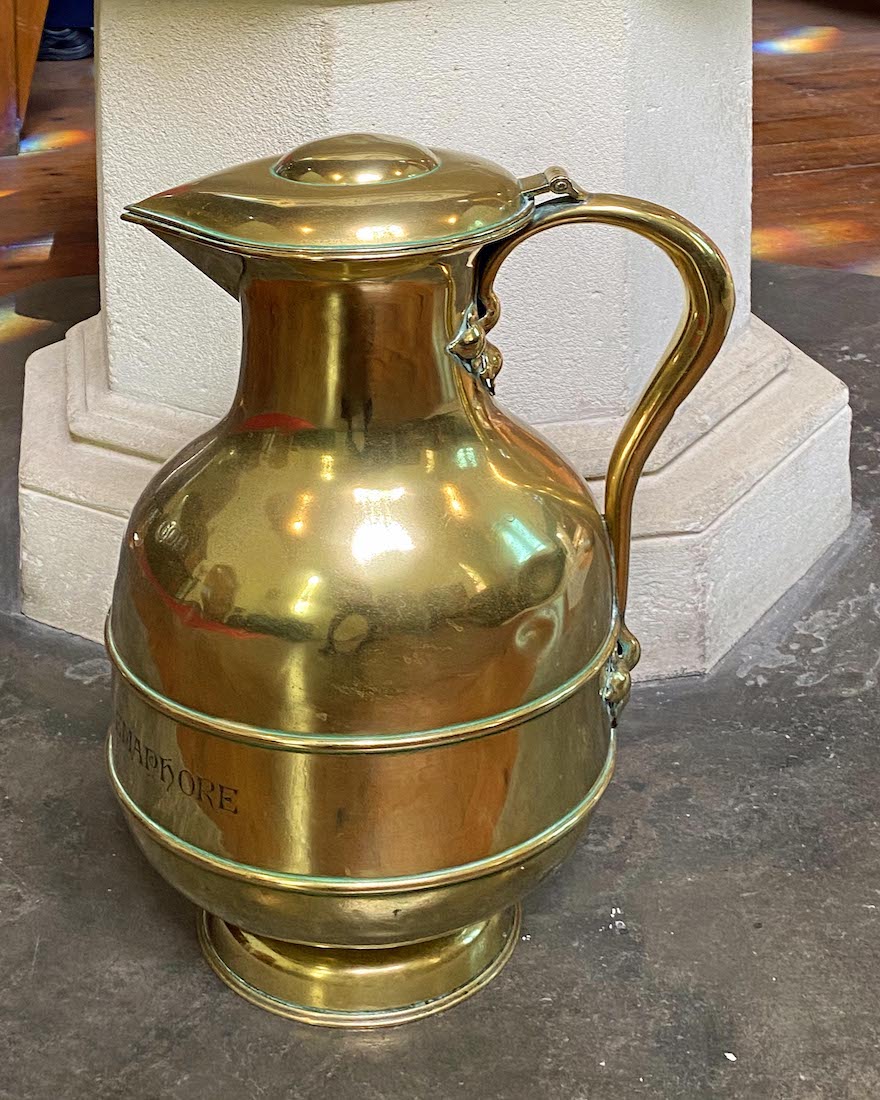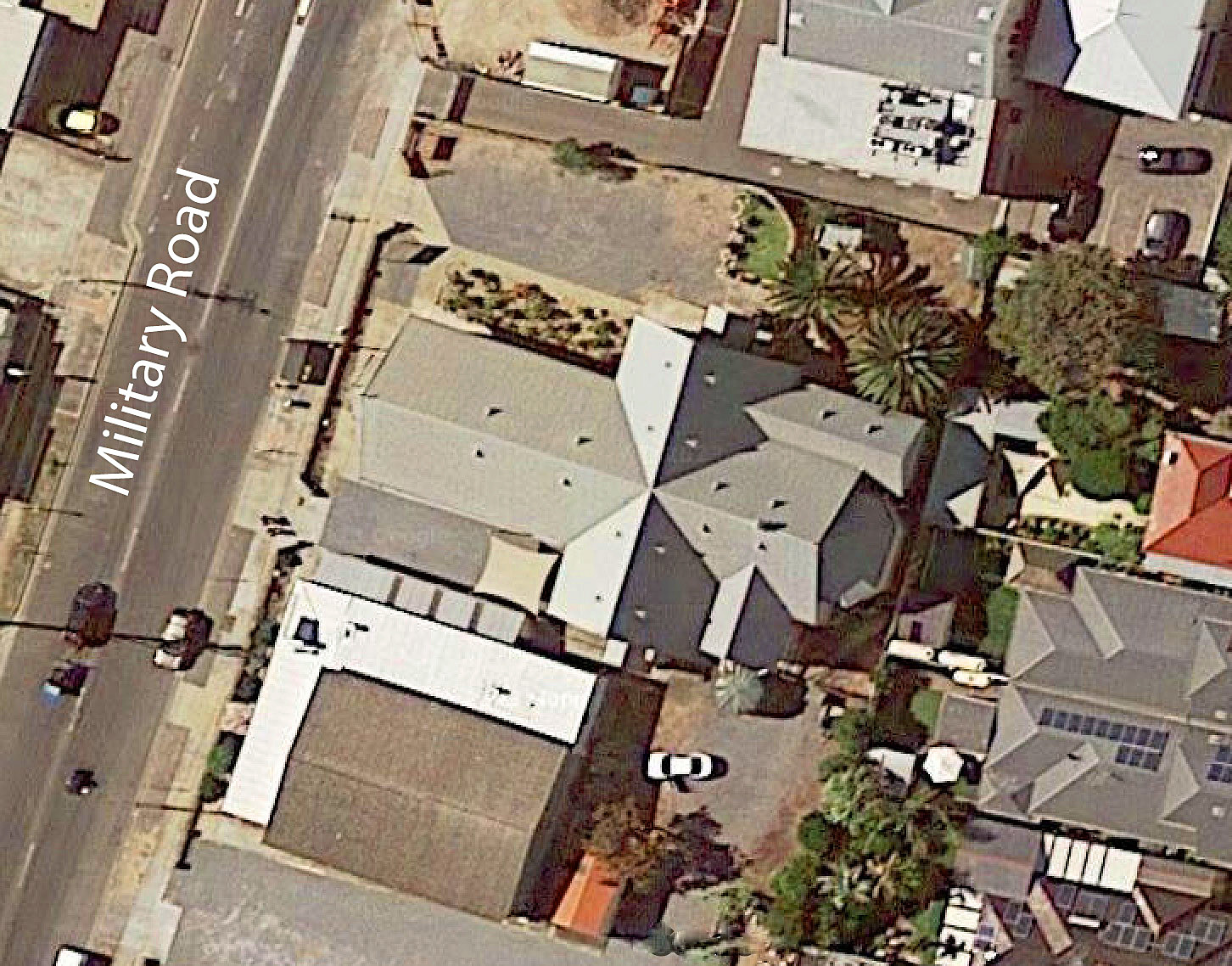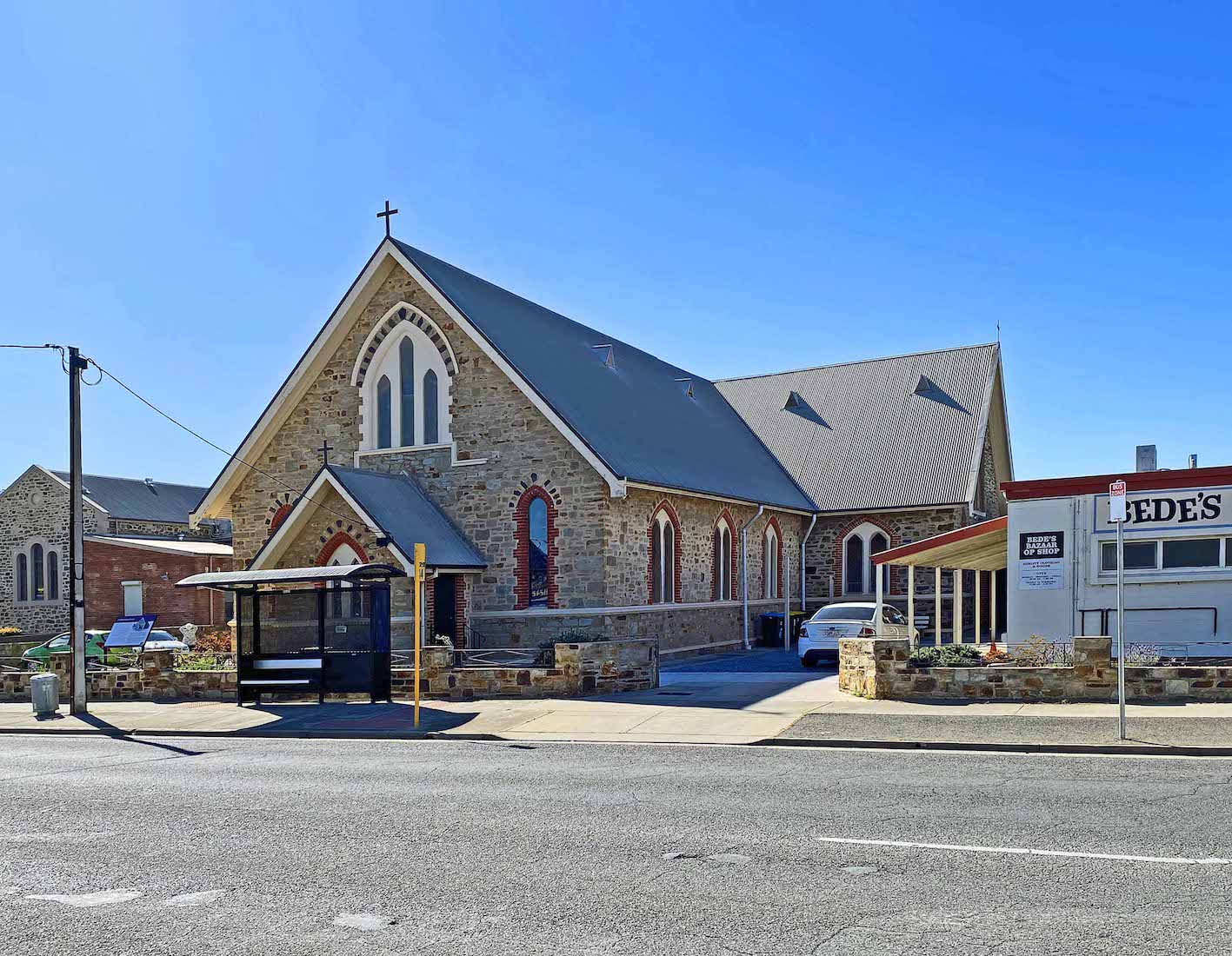
A satellite view, plan and brief history of St Bede’s Church are given below. However, if you want to begin your tour of the Church immediately, tap / click on START . You can also access intermediate points in the tour by a tap / click on the following links:

Here is a satellite view of St Bede’s Church. As usual we use liturgical directions on this site, which assume that the sanctuary is in an Easterly direction (capital letter), and the other directions accordingly. This caused no problems here as the Church is oriented so that its sanctuary is pointed geographically just south of east.
The Church is cruciform in shape with very wide cross components. There is an apse at the Eastern end, office extensions to the East of the transepts. and a Western entry just visible next to Military Road. In the Northeast corner of the property there is a fenced off area with toilet facilities.
HISTORY
Year Built: 1878
Address: 200 Military Road, Semaphore SA 5019
St Bede
The first building was called the Mission Church of St Andrew. George Farr, the first priest who had been Chaplain at St Peter’s College, claimed St Bede as the patron saint because of his love of scholarship. St. Bede the Venerable, (672/673- 735) was an Anglo-Saxon monk, theologian, historian, and chronologist. St. Bede is best known for his “Ecclesiastical History of the English People”, a source vital to the history of the conversion to Christianity of the Anglo-Saxon tribes. Bede’s works fall into three groups: grammatical and scientific, scriptural commentary, and historical and biographical. During his lifetime and throughout the Middle Ages, Bede’s reputation was based mainly on his scriptural commentaries, copies of which found their way to many of the monastic libraries of western Europe.At the age of seven he was taken to the monastery at Jarrow in Durham County. Apart from visits to Lindisfarne and York, he seems never to have left there. Buried at Jarrow, his remains were removed to Durham and are now in the Galilee Chapel of Durham Cathedral.
A People of Hope
In the 1870s, Semaphore was developing as a place to live, to do business and to provide for increasing numbers coming to enjoy the beach, the jetty and the town. Church of England folk had long taken the long trip to Port Adelaide to attend St Paul’s Church. With enthusiasm they set about building their own church to seat 300 and engaging their first priest, Archdeacon George Farr. Initially called St Andrew’s, the church was built in 1878. The initial building was too small. Over the next decades the church was extended, transepts and a nave were added, an organ loft housed a new Dodd organ, and the first stained glass windows were installed. Worship services attracted hundreds and the ministry of love, care and compassion to the needy in the community for which St Bede’s is known, became established in those early years.
A People of Worship
The history of the Church is not without conflict. The Anglican Church emerged from the Protestant Reformation which rejected many Roman traditions. In the 19th century, the Oxford Movement attempted to recover some of the ritual in worship which had been discarded by protestants. Candles, coloured vestments, and altar cloths gave colour to the church. Holy Communion became more important and worship patterns changed. Around the turn of the 20th Century, there was controversy and argument as St Bede’s came under the influence of the Oxford Movement and the church became a place of beauty in worship. In 2021, the Chapel was renamed the Chapel of St. Francis, and the Candlesticks and Crucifix from St. Francis House, Glanville, were placed in this area.
A People of Sorrow
The World Wars had a profound effect on the people of Semaphore. The Memorial Board displays the great losses and suffering of so many young men. We treasure their stories, the memorial windows and plaques and sanctuary furniture in their memory.
Outreach and Further Development
In the first three-quarters of the 20th Century, the Church thrived as the focus of people’s faith, family and social life. Groups such as Mothers’ Union, Girls’ Friendly Society, and the Church of England Boys’ Society flourished. There was a well-populated Sunday School and Children’s Ministry.
Ministry at St. Bede’s has always served the wider community of Semaphore. To cater to the needs of fellowship, welfare and outreach, a new hall was opened on Military Road, replacing the 1895 building. More developments include continuance of service to the needy, especially through Breakfast@St Bede’s, establishment of Bede’s Bazaar providing good quality clothing for sale at very reasonable prices, sponsoring a Community Garden, the development of a Memorial Garden, and provision of car parks.
https://www.stbedessemaphore.org.au/history/



